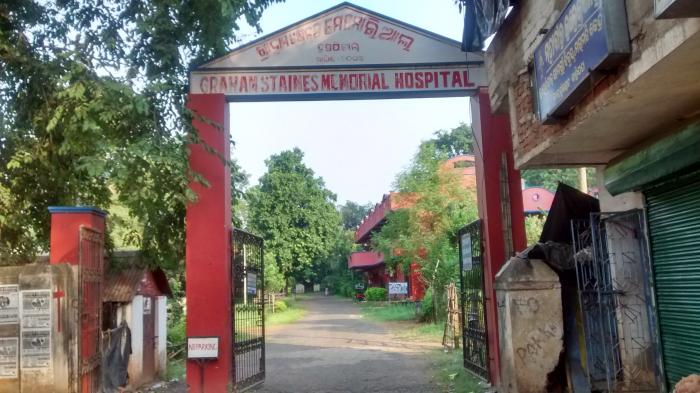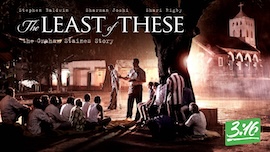GRAHAM STAINES’S MURDER SHOCKED INDIA

[Graham Staines Memorial Hospital—Justus2Denganna / [CC-BY-SA] wikimapia.org/1599537/Graham-Stainen-Leprosy-Hospital#/photo/5137471 (under Wikimapia's terms, all uploaded images become available for use); In 2004 Baripada opened this forty-bed hospital for leprosy patients in memory of Graham Staines. ]
WHEN twenty-four-year-old Graham Staines visited India for the first time in 1965 to meet a pen pal, he fell in love with the area of Baripada and its people. The Australian made India his home, joining in work with people suffering from leprosy. Among his initiatives was to establish a dairy where people suffering from the disease could earn an income. He had to persuade Indians they could safely drink the milk. He learned three local languages and helped translate the Bible into the Ho dialect. The government depended on him for some translation work and to encourage locals to get polio immunizations.
In 1981 Staines met Gladys June Weatherhead, a volunteer with the leprosy work. Two years later they married. They had three children, Esther, Tim, and Philip. Staines taught other Christians in the region and quietly shared his faith with non-Christians. To reduce barriers, he dressed in local garb, ate local foods, and spoke the regional languages. However, few came to Christ.
Annually, for fourteen years, Staines also participated in a jungle camp near Manoharpur, at which many of the region’s Christians gathered for fellowship, encouragement, and Bible teaching. At this gathering, Staines would also provide instruction in public hygiene.
The region around Manoharpur clung to the Santhal culture and resented Christians because they refused to offer animal sacrifices to appease evil spirits. Christians also angered traditionalists by singing hymns during Christian weddings. Resentment boiled over in 1999 when Staines and his two sons attended the annual jungle camp. Hours before his death, Staines, with help from his sons, dispensed medicines and inspected people for leprosy. After showing a film to locals, the Christians decided to spend the night in Manoharpur’s church.
The church was crowded, so Staines opted to sleep in his jeep with his boys. Just after midnight, early on the morning of this day 23 January 1999, a mob instigated by Dara Singh, a zealous Hindu, surrounded the jeep and set it on fire. When Staines and his sons tried to escape the flames, the mob pushed them back in until they burned to death.
International outcry was immediate. Staines was beloved in Baripada for his years of self-sacrificing work among the poor and sick. Thousands turned out to mourn him. The leprosy patients sobbed inconsolably. Gladys said, “I am terribly upset, but not angry. My husband loved Jesus Christ who has taught us to forgive our enemies.”
Because the Santhal hid Dara Singh, it was a year before he was captured. After a trial he was sentenced to death and eleven associates were given life sentences. In keeping with her religious profession, Gladys pleaded that Singh’s death sentence be commuted to life imprisonment. Eventually it was and the sentences of his co-defendants vacated. The courts ruled “It is undisputed that there is no justification for interfering in someone’s belief by way of use of force, provocation, conversion, incitement, or upon a flawed premise that one religion is better than the other.”
—Dan Graves
----- ----- -----
Watch The Least of These, the Graham Staines Story at RedeemTV
For more on Christianity in India, read Christian History #87, India: A Faith of Many Colors








